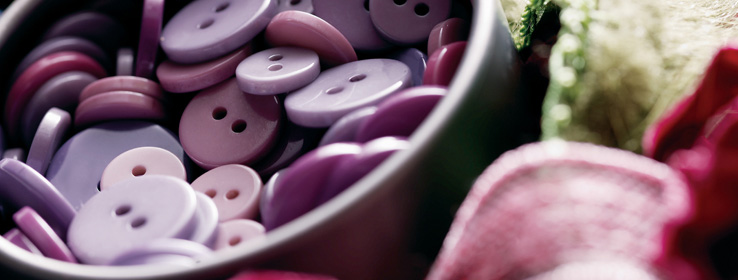One of the most fundamental decisions a designer and client must make together is what color palette to use. But what if at least part of the decision is made for you? Sometimes the space you're designing contains an existing element that the client cannot (or will not) replace. Designer Glen Boudreaux has some insights on how to handle these challenges.
Whether it's a piece of antique furniture, patterned wallpaper, bathroom fixtures or an expensive rug, every so often a client insists you work an existing feature into the space you're designing for them. And if that element is a particular color, you're left with a peculiar challenge: to give them the change they've asked for while working within color parameters you didn't agree to.
The circumstances can vary, but the choice is ultimately quite simple, according to Glen Boudreaux of Dallas-based Glen Boudreaux & Associates: "You either have to use it as part of your color scheme, or get rid of it."
Sometimes the accidental color leads to very satisfying results. Boudreaux remodeled several bathrooms in a home where two needed such extensive overhauls that, for time and budget reasons, the third had to be redone as economically as possible. It included mint green and dark purple tile accents that Boudreaux loved, but the fixtures were an incongruous light purple, and were rusty and damaged as well. He replaced the metal parts and had the bathtub, toilet and sink re-enameled, which covered all the damage and allowed him to tweak the purple a bit so it coordinated with the rest of the room. "It looked like brand new fixtures," he says. He was able to retain the feel of the English Tudor-style house, while improving the colors and giving it a face-lift.
There's always a way to work around existing colors, says Boudreaux; what's more important is divining the reason behind the client's attachment to a piece. "You have to know how to ask questions – dig deeper than what's on the surface of why they don't want to change it," he says.
In one case, a client desperately wanted to keep a chair that belonged to her mother. The colors didn't work with what Boudreaux had planned for the room, and the springs were so badly broken that no one could sit in it. "Sentimental value is the most common reason for a client wanting to keep something," Boudreaux says. "So, you really need to be careful talking about these things – you don't want to offend your client, especially if someone's just passed away."
After further conversation, he discovered that the client was amenable to reupholstering the chair, as long as the integrity of the wooden frame was maintained. When she saw (and was able to sit on) the result, Boudreaux says, she exclaimed, "It looks so much more like my mother's now." In this case, the sentimental value was intact, the color fit the ultimate design, and the chair was once again functional.
Other times, there's no way of working with a color, and the client must simply be talked out of it. Boudreaux had a client in love with her dining room walls, which were painted a dark burgundy with black glazing over it. The problem? She'd hired him to lighten up the house, using lots of neutrals. Boudreaux had to persist in convincing the client that the dark-walled dining room simply would not work with what she wanted him to do in the rest of the house – it would be too jarring. "It took some time to talk her out of it," he says, but with detailed explanation, she finally saw the light. "If they don't change it, it's up to us as design pros to let them know what the impact will be."
Sometimes you can let your finished design do the persuading for you. Boudreaux had a client who didn't want to change the bathroom off the master bedroom he was redesigning – but the bathroom was covered in "godawful" wallpaper. So Boudreaux went ahead with the master bedroom, and after seeing the results, the client realized on her own that the bathroom wallpaper had to go.
In another home, the clients didn't want to replace the dingy sculptured carpet, though not because of an attachment to it. "All they could see was the dollar amount to replace it," Boudreaux says. Once he knew the reason, he discussed methods of saving money in other areas of the redesign, and was ultimately able to replace it and still give them what they wanted. Another client had a similar hesitation over replacing dated harvest-gold laminate countertops, thinking the only replacement option would be some sort of expensive stone surface. Boudreaux found them another laminate, one that looked a lot like wire-brushed granite, and the client was happy to make the change. If money is the issue, says Boudreaux, "you just have to show them a way to change it without it costing more."
If the client is more concerned with keeping a particular colorful piece than showing it off, you can try moving it to another room or positioning it in a way that minimizes its impact. When another of Boudreaux's clients was moving the master bedroom to another room, they wanted a new robin's-egg-blue color scheme Рbut they also wanted to keep a rug from the old room, which matched the old d̩cor of regal, rust colors. While Boudreaux was unable to get them to part with the rug, he did get them to agree to put it under the bed, so only the edge showed. "Sometimes you have to lose a battle to win the war," he says.
On the flip side, sometimes clients may be fixated on getting rid of a colorful element that you think will benefit the overall design. Boudreaux worked on a lakeside house whose occupants owned some chairs, a table and a chest with a hand-painted, scrubbed finish – mossy green with wood showing through in some places. The clients assumed that the old, worn pieces would need to be refinished – until Boudreaux explained that the finish they naturally had was desirable, and that people would pay large sums of money to get something similar. Additionally, the furniture's color dovetailed neatly with his plan to draw in the colors of the outdoors, including the green of the lake. After the rest of the design was complete, the clients agreed that the pieces were perfect just the way they were.
When doing an expensive overhaul of an entire home, you should look at the elements that are already there and see what you can work with, thereby saving money for what really needs changing. Boudreaux recently started redesigning a California Spanish-style bungalow in which the client wants classic clean lines and neutral colors, with just a hint of detail in the accents.
During the consultation, the client immediately pointed out the fireplace in the living room as the first piece that needed replacing. Boudreaux looked at it and saw clean lines, with a little scroll design in the center, and a buff color that could easily work with the warm neutral palette he plans for the home. "She thought it would be the big obstacle to this redesign, but it really fit in," he says. While the fireplace will now dictate the wall colors throughout the open-design first floor, Boudreaux has only to adjust his planned colors a little bit so that they coordinate. With everything else that needs to be done, it's a relief to find the fireplace is usable, because replacing it would have meant taking dollars away from the rest of the house.
The key with color challenges such as these, says Boudreaux, is to get to the root of why a client wants to keep – or get rid of – a particular piece. Try to look forward to the project's completion to see how existing elements can work in the overall vision. If you have a problem with something the client wants to keep, or vice versa, see if there's a way to move or alter a piece minimally, so you'll both be satisfied with the finished product. If you ask the right questions and get to the heart of the issue, the solution will present itself.
Michael Scott, design director of Robb & Stucky Interiors, Scottsdale, Ariz., would agree. "Never say 'never,' as sometimes what is first perceived as a mistake can turn into a blessing and be the icing on the cake. When you use something of a client that is precious and has sentimental value, and you make it look better than they ever thought it would, you will have a client for life."










